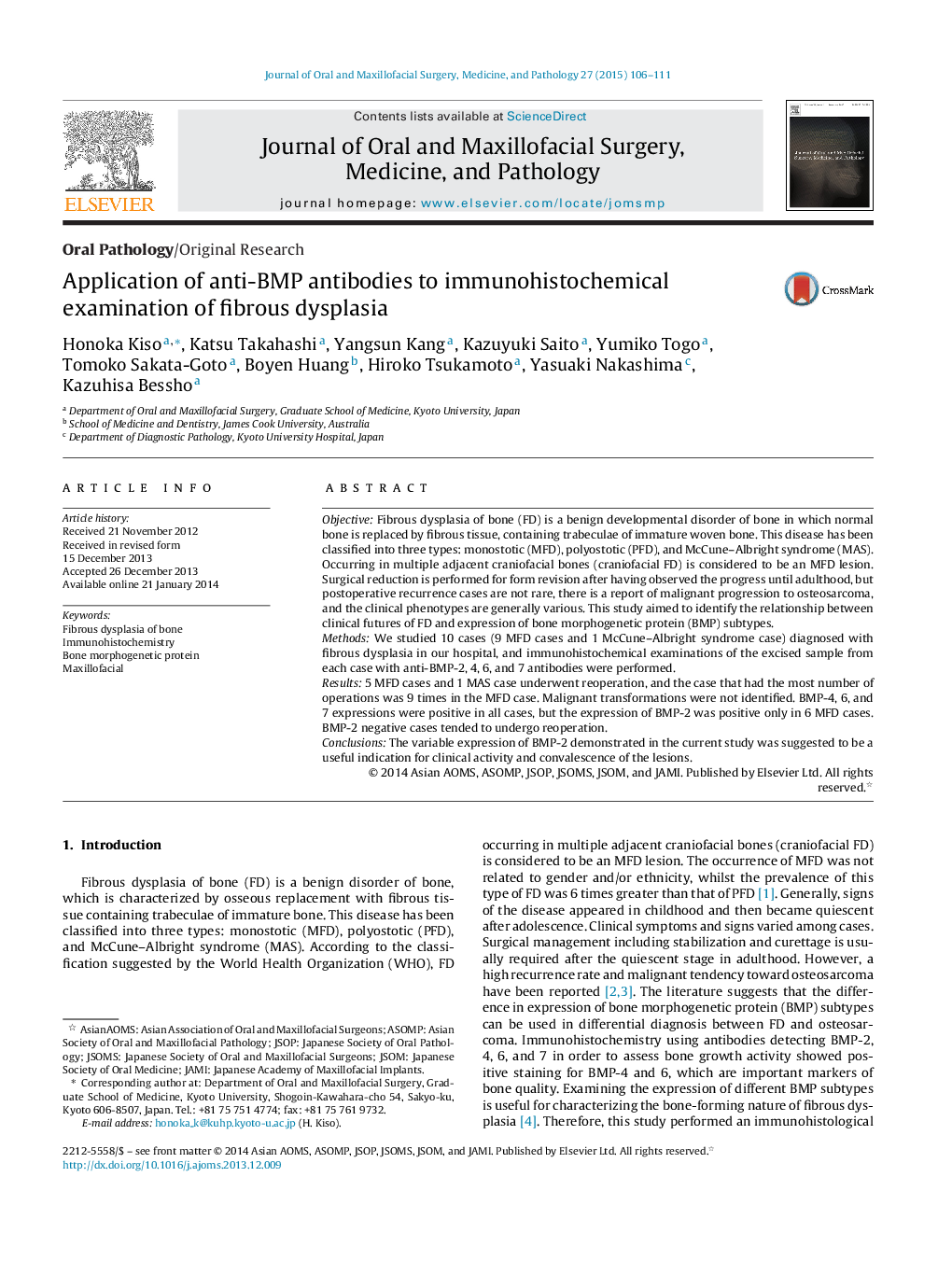| Article ID | Journal | Published Year | Pages | File Type |
|---|---|---|---|---|
| 3159822 | Journal of Oral and Maxillofacial Surgery, Medicine, and Pathology | 2015 | 6 Pages |
ObjectiveFibrous dysplasia of bone (FD) is a benign developmental disorder of bone in which normal bone is replaced by fibrous tissue, containing trabeculae of immature woven bone. This disease has been classified into three types: monostotic (MFD), polyostotic (PFD), and McCune–Albright syndrome (MAS). Occurring in multiple adjacent craniofacial bones (craniofacial FD) is considered to be an MFD lesion. Surgical reduction is performed for form revision after having observed the progress until adulthood, but postoperative recurrence cases are not rare, there is a report of malignant progression to osteosarcoma, and the clinical phenotypes are generally various. This study aimed to identify the relationship between clinical futures of FD and expression of bone morphogenetic protein (BMP) subtypes.MethodsWe studied 10 cases (9 MFD cases and 1 McCune–Albright syndrome case) diagnosed with fibrous dysplasia in our hospital, and immunohistochemical examinations of the excised sample from each case with anti-BMP-2, 4, 6, and 7 antibodies were performed.Results5 MFD cases and 1 MAS case underwent reoperation, and the case that had the most number of operations was 9 times in the MFD case. Malignant transformations were not identified. BMP-4, 6, and 7 expressions were positive in all cases, but the expression of BMP-2 was positive only in 6 MFD cases. BMP-2 negative cases tended to undergo reoperation.ConclusionsThe variable expression of BMP-2 demonstrated in the current study was suggested to be a useful indication for clinical activity and convalescence of the lesions.
